In recent years, star trackers have become more accessible to the public, however, deciding which one to buy can be exhausting. There are a lot of different specifications, brands, models, etc., which can make the process of buying the best star tracker harder than it should be.
I’m a professional astrophotographer and I’ve been using different star trackers for many years. I’ve created this complete buying guide in which I’ve put the best star tracker brand and models to the test and compared them to help you decide which one adapts the best to your needs.
In summary, these are the best star trackers in 2025:
- Benro Polaris
- iOptron SkyGuider Pro
- MSM Nomad
- Sky-Watcher Star Adventurer Pro
- iOptron SkyTracker Pro
- Sky-Watcher Star Adventurer GTi
- Sky-Watcher Star Adventurer Mini
- Vixen Optics Polarie
- Fornax Lightrack II
Doing astrophotography with a star-tracker will set a before and after in your night images by allowing you to capture longer exposures of the night sky and will provide you more flexibility in your settings. If you are looking for a way to shoot better Milky Way photographs or to take the next step in your astrophotography journey, this is the best investment you can make.
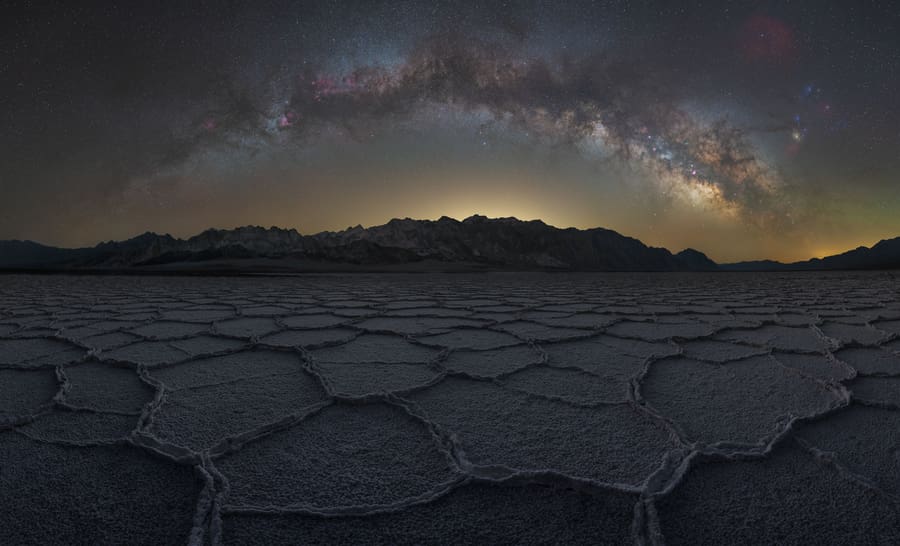
Milky way panorama captured with the Skywatcher Star Adventurer Pro
Below, you’ll see the complete list of the best star trackers as well as a section with key things to consider when buying a star tracker for astrophotography.
In a nutshell, these are the best star-trackers for astrophotography in 2025:
1. Benro Polaris
The Benro Polaris is the best overall star tracker in 2025. If you are looking into a tracker with advanced features and plenty of automated functions, it won’t disappoint you.
There is one word that sums up the new Benro Polaris: automation. Benro has packed this star tracker with the latest technology. This star tracker can automatically go to any star you choose and use it to polar align, create tracked Milky Way panoramas automatically, and more!
This star tracker does not have a polar scope, but as I mentioned earlier, the polar alignment process is done automatically via the smartphone app. Another great feature of this star tracker is that it uses an internal battery, but it can also be powered by an external power source.
On the hardware side, the Benro Polaris boasts an incredible 15lbs (7kg) payload capacity, making it the highest base payload on this list; unfortunately, it doesn’t take counterweights. When it comes to tracking, it can comfortably do 5-6-minute exposures with wide-angle lenses.
The only con is that there are still a few bugs in some of the advanced functions, but these are not problems if you know the workarounds.
Here you can see a full review of the Benro Polaris.
| After using all the most popular star trackers over the last few years, the Benro Polaris is my go-to star tracker in all situations and my first recommendation if you are looking for a compact and advanced tracker. I love this tracker so much that I created a dedicated Benro Polaris course. |
Use our discount code 2WGJM4TS8Q to save $100 OFF your tracker when purchasing directly from Benro!
2. iOptron SkyGuider Pro
The iOptron SkyGuider Pro is my preferred option after the Benro Polaris, and the one I used for many years before switching to the BP. This star tracker is perfect for any astrophotographer looking to spend a little less money and get a traditional mechanical star tracker that is reliable and easy to use.
Thanks to its 11lbs (5kg) payload capacity, the Skyguider is capable of supporting bigger lenses and even small telescopes, allowing you to capture up to 5-6-minute exposures even on a short telephoto lens without any issues.
This star tracker has a great polar alignment system. The built-in polar scope is illuminated; thus, making it very easy and simple to align the tracker. Additionally, you can get the iPolar version of this tracker, which comes with a little camera that makes the polar alignment process even easier.
When it comes to design, this tracker is compact and robust, and it feels like it will last you a lifetime. However, the equatorial base feels flimsy and not on par with the rest of the design quality, being the main downside of this tracker.
If you get the full package, which I recommend, you’ll get a counterweight with the tracker that will help balance the whole set-up if necessary. Battery life isn’t an issue, lasting up to 20 hours and being easily charged using a Micro-USB cable.
Here you can see a full review of the iOptron Skyguider Pro.
3. MSM Nomad
The MSM Nomad has arrived to improve the already good MSM Rotator. With its incredibly reduced price point, it’s targeted towards amateur astrophotographers. MSM (Move Shoot Move) has done a great job at delivering impressive results with simple controls and at a reasonable price. All these attributes make the MSM Nomad the best budget star tracker in 2025.
The MSM Nomad now features a 7lbs (3.2kg) payload, which is the highest of all the small star trackers in the market, by a small margin. This will allow you to mount heavier lenses to do some deep-sky astrophotography; however, it’s still not possible to mount heavy telescopes. If you mainly shoot with wide-angle and mid-range lenses (up to 50mm), this tracker will cover all your needs, allowing you to capture up to 3-minute exposures with a good polar alignment. This star tracker is the only one on this list that doesn’t support a counterweight system.
Polar alignment is very easy with this astrophotography mount. The basic kit comes with a laser, which you just have to point at Polaris or the south celestial pole. If lasers are banned in your country, you can get the kit with the polar scope instead.
The build quality of this star tracker is good, considering the price. The body is made of aluminum alloy and feels very durable. The battery lasts around 5 hours, but you can use an external battery to charge it via USB-C. Quality control with the MSM Nomad is so far better than with its predecessor, and no reports have been made about faulty units with poor tracking performance.
Here you can see a full review of the MSM Rotator. We’ll soon have the full review of the MSM Nomad.
4. Sky-Watcher Star Adventurer Pro 2i
The Sky-Watcher Star Adventurer Pro 2i is one of the best standard camera star trackers in the market. This tracking mount can effectively capture long exposure images of the night sky up to 5 or 6 minutes without issues even with longer focal lengths.
The equatorial base that ships with this tracker is one of the best I’ve tested. It’s sturdy, precise, and reliable. Most materials in this model are very high-quality, but consider that it’s a bulky and heavy tracker, so it’s not ideal for long hikes and trips.
However, the biggest downside of this star tracker is the polar scope illuminator, which is an external flimsy piece of plastic easy to break and lose. I hope this gets improved in a future version.
Another downside is the battery system, which runs on four AA batteries. The main problem is that there isn’t a traditional on and off button; it uses a wheel that can be accidentally turned while sitting in the backpack. This has happened to me a few times and I’ve only noticed my battery was drained after arriving at the location.
Regardless of its flaws, the Sky-Watcher Star Adventurer Pro 2i is still one of the best star trackers in the market in 2025 because when it comes down to tracking, it does an outstanding job. There are three kits available: the Pro package, the Astro package, and the Photo package. I’d recommend going for the Pro package because it offers the best value for money.
If you want to learn more about this star tracker, read our full Sky Watcher Star Adventurer 2i review.
5. iOptron SkyTracker Pro
The iOptron SkyTracker Pro is the latest addition to iOptron’s family of portable astrophotography mounts. This star tracker is small, but its robust design will allow you to track with precision even when using longer focal lengths, such as 100mm. At this focal length, you can get up to 1-minute exposures with no issues.
Similar to its big brother (the SkyGuider Pro), the polar scope in the iOptron SkyTracker Pro is illuminated, and you can choose between different levels of light, which makes polar alignment a delight.
When it comes to weight, the iOptron SkyTracker Pro is a light tracker, weighing only 1.5lbs (0.68kg). It’s capable of supporting up to 6.6lbs (3kg) of payload, which can be further extended with additional counterweights.
In the design section, this tracker isn’t as compact as the MSM Rotator, but it will still fit easily in your backpack, and it’s also lightweight which makes it a great companion for hikes. The battery lasts up to 24 hours and can be charged via Micro-USB to extend the duration, so it’ll last you multiple sessions on a single charge.
The general build of the iOptron SkyTracker Pro is plastic, and it can feel cheap to the touch. The default equatorial base isn’t great. The screws used to adjust the azimuth are cumbersome and a little hard to get used to, but once you get the hang of it, you’ll be able to polar align with precision.
6. Sky-Watcher Star Adventurer GTi
Released on April 15th of this year, the Sky-Watcher Star Adventurer GTi is another new addition to this best star tracker list. It’s packing some unique features and great improvements over past Star Adventurer models.
There’s one feature that sets this mount apart: the GoTo (GT) capability. With this option, you can select a target on your smartphone – which can be stars, nebulae, or constellations – and the Star Adventurer GTi will find and automatically point your lens or telescope to the subject. This makes deep-sky astrophotography much easier, especially for beginners.
Compared to other Skywatcher entry-level trackers, this unit includes a built-in illuminator in the polar scope. However, this tracker still uses standard batteries; requiring 8AA batteries to run it. You can also power it with an external power source plugged into its 12v DC port.
The 11lbs (5KG) payload capacity on this mount is on par with other high-end portable star trackers. This capacity can be further increased by using counterweights. Tracking time is also similar to the Star Adventurer Pro 2i, standing at 6 minutes depending on the focal length you use.
7. Sky-Watcher Star Adventurer Mini
Sky-Watcher designed this camera star tracker to be as lightweight and portable as possible, and they definitely accomplished the mission. The Star Adventurer Mini (S.A.M for short) is a smaller version of the original Sky-Watcher Star Adventurer Pro, which makes it ideal for photographers on the move.
It’s got a 6.6lbs (3kg) payload capacity, which makes it ideal for smaller to mid-sized set-ups. You can get an optional counterweight with the Pro package, but don’t push this tracker to its weight limits. As for tracking times, you can get perfectly sharp stars with 4 to 5-minute exposures and around 1 minute with longer lenses.
Polar alignment in this tracker is very similar to the bigger Star Adventurer Pro 2i. It ships with a polar scope, which also uses an illuminator that needs improvement.
The battery duration on this tracker is great for its size, lasting up to 24 hours, and putting it on par with the iOptron SkyTracker Pro. However, the S.A.M uses 2 AA batteries instead of a built-in battery. It can also be charged via Mini-USB even when it’s in use which will extend the battery life.
This star tracker has built-in Wi-Fi and can only be operated through an app on your smartphone. The SAM Console app is used to set up the different tracking speeds and time-lapse mode. The issue is that the Wi-Fi signal is unstable and it’s hard to get the connection right the first time, which can make you lose valuable time.
Learn more about this star tracker by reading our full Sky Watcher Star Adventurer Mini review.
8. Vixen Optics Polarie
The Vixen Optics Polarie was initially designed to be a star tracker for DSLR cameras, and even though times have changed since the launch of the first version, it is still a great astrophotography equatorial mount for newer and lighter cameras such as the mirrorless system.
It falls into the light star tracker category, and its payload is limited to 5.5lbs (2.5kgs), making it the lowest payload capacity on this list. You can get a counterweight as an additional accessory which allows the Polarie to bear up to 6kg, but this will increase the price considerably.
Polar alignment with this star tracker can be challenging, mostly in the Southern Hemisphere. It doesn’t come with a full-size polar scope and relies on a tiny hole through the Vixen Polarie body. That’s why Vixen Optics gives you the option to get the official Polarie PF-L II polar scope for this tracker, but the price may be a drawback.
The Polarie has one of the best designs, which resembles a compact camera both in shape and size. It also feels robust, and uses two AA batteries which will run this star tracker for 2 hours approximately.
9. Fornax LighTrack II
The Fornax LighTrack II is radically different from any other star tracker you’ll see. Most star trackers have a cylindrical or rectangular design, but in the Fornax, the motor is a few inches away from the mounting point and uses a friction lock system to ensure precise tracking.
This tracker can support up to 13lbs (6kg), which puts it ahead of its competitors by a big stretch. This payload increases to 26.5lbs (12kg) when you pair it with the FMC 100 counterweight. With this payload, you can even mount a medium-sized telescope or a large telephoto lens. At 1000mm you can get perfectly sharp exposures up to 6 minutes.
Polar alignment is another great aspect of this tracker. The polar scope is internally illuminated which makes everything easier. Unfortunately, this design isn’t perfect. Tracking time is limited to 107 minutes, and after that, you need to reset the tracker’s position, which is far from ideal.
Another big downside is the lack of an internal battery. The Fornax LighTrack II requires an external power source connected to its center-positive DC plug to be able to function, which reduces the portability.
| So, who is the Fornax LighTrack II for? This star tracker will satisfy the needs of more advanced astrophotographers looking to shoot deep-sky images with a telescope or a large telephoto lens. |
What makes a Good star tracker for astrophotography?
If you are in the market to get a new star tracker, there are a few elements you need to consider first. Save this list and use it as a star tracker buying guide:
GET THE CALENDAR WITH THE BEST DATES TO PHOTOGRAPH THE MILKY WAY IN 2025
You'll also receive our PDF guide to photographing the Milky Way!
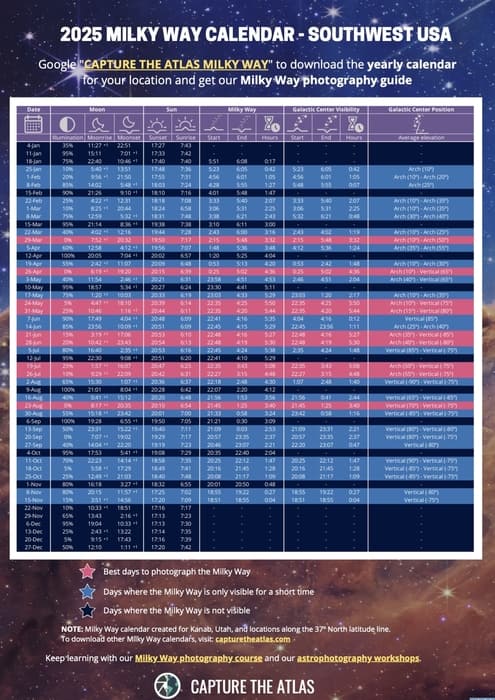
Which is the most popular Star tracker in 2025?
The Astronomy Photographer of the Year is the most renowned astrophotography contest in the world. Every year, the RMG (Royal Museums Greenwich) receives thousands of entries, from which they choose a winner. Additionally, they release the stats about the most used star-trackers which they gather from the image information submitted by the participants.
We don’t know which will be the most popular star tracker for astrophotography in 2025 yet, but using data from the 2023 edition of the contest, these were the most popular star trackers last year in case you can find it helpful:
Data credit: Skies & Scopes
Conclusion – Which star tracker is the best?
Finding the best star tracker for astrophotography doesn’t have to be difficult.
If you are looking for a beginner star-tracker that is also affordable, I would recommend the MSM Nomad since it’s the best budget star-tracker in the market. However, if you can, I’d invest in an iOptron SkyTracker. Both are great budget star trackers for novices.
However, if you are more advanced or prefer to invest in a long-term tracker to get into deep-sky astrophotography or shooting complex tracked panoramas, my best recommendation is the Benro Polaris.
It is a phenomenal unit, and I consider it the future of star-tracking. However, it will require a greater investment and a steeper learning curve.
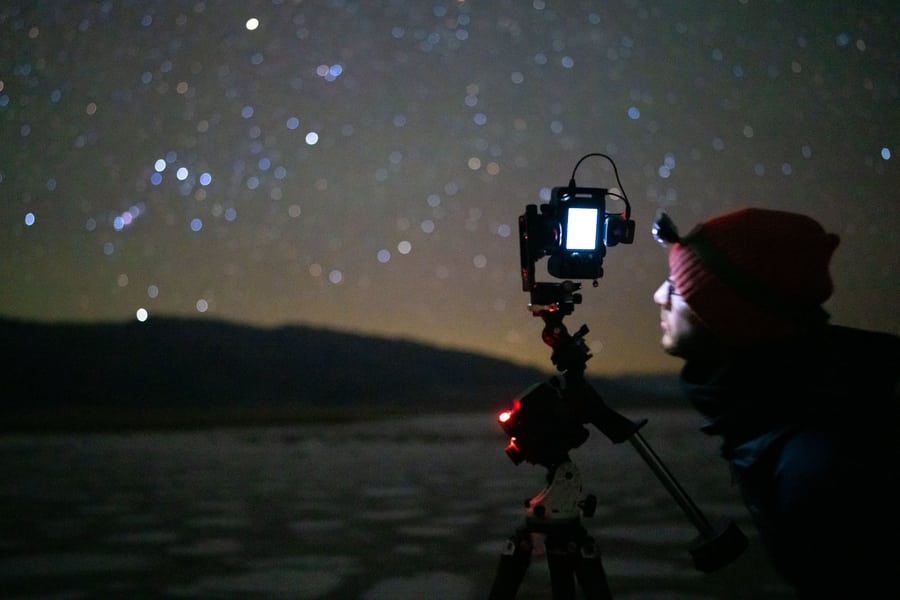
Find the best star tracker that will cover your needs as an astrophotographer
Tracked astrophotography is fascinating, and, as you’ve seen, there are plenty of options covering most needs. Once again, there is no wrong choice; just evaluate your needs, and that will determine the best star tracker for you.
Also, a star tracker doesn’t matter if you don’t know how to set it up and how to use it properly. In the Capture the Atlas academy, you’ll find a whole course dedicated to explaining everything you need to know to get the most out of your star tracker, including advanced techniques such as tracked Milky Way panoramas. You can also find a complete course on the Benro Polaris.
Leave a comment with any questions related to star trackers or tracked astrophotography, and I’ll be happy to answer.
Happy captures & clear skies!

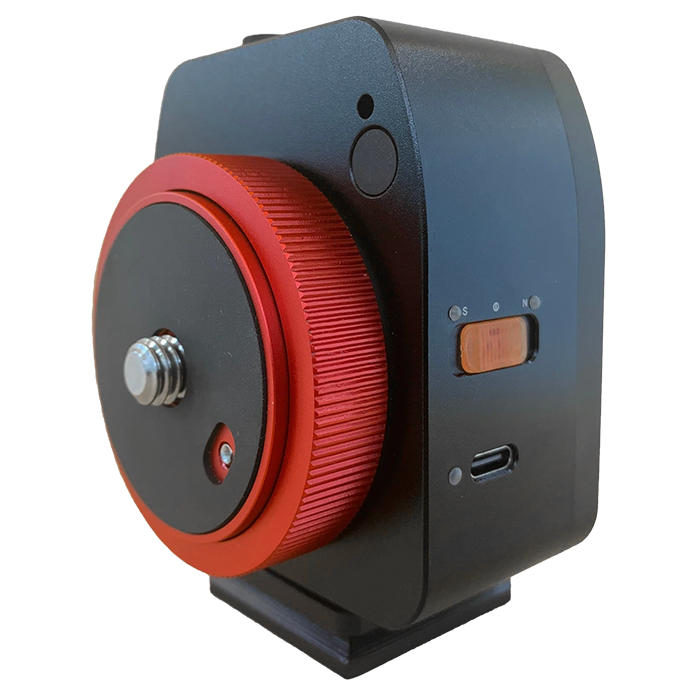
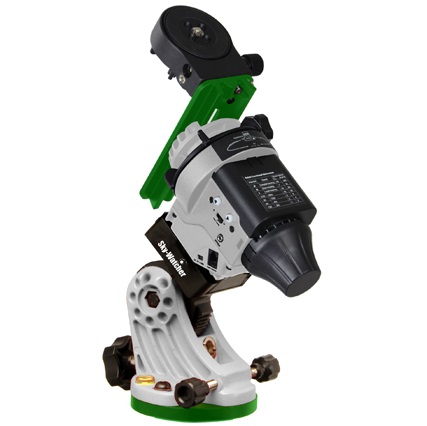
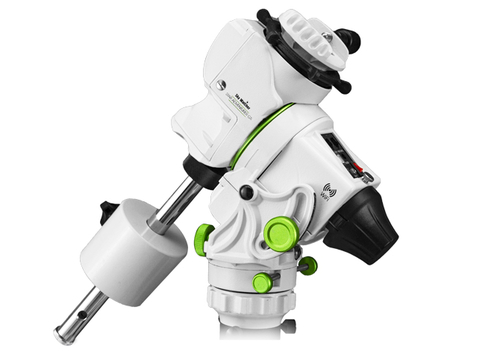
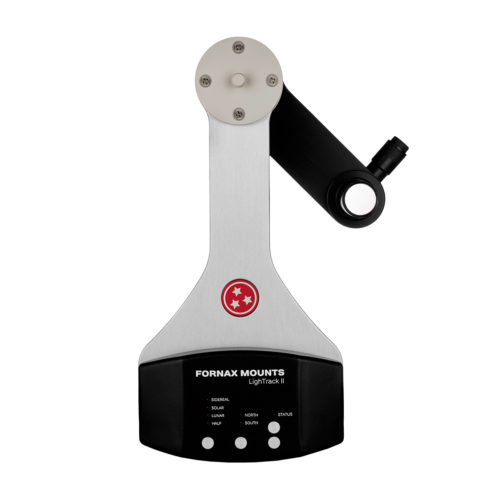
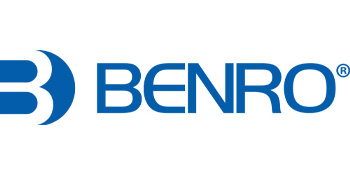


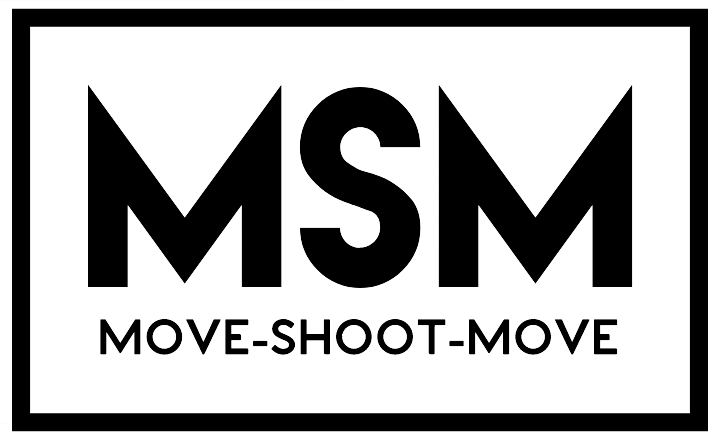
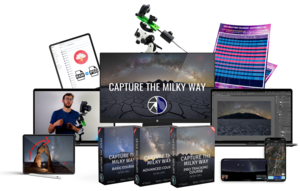
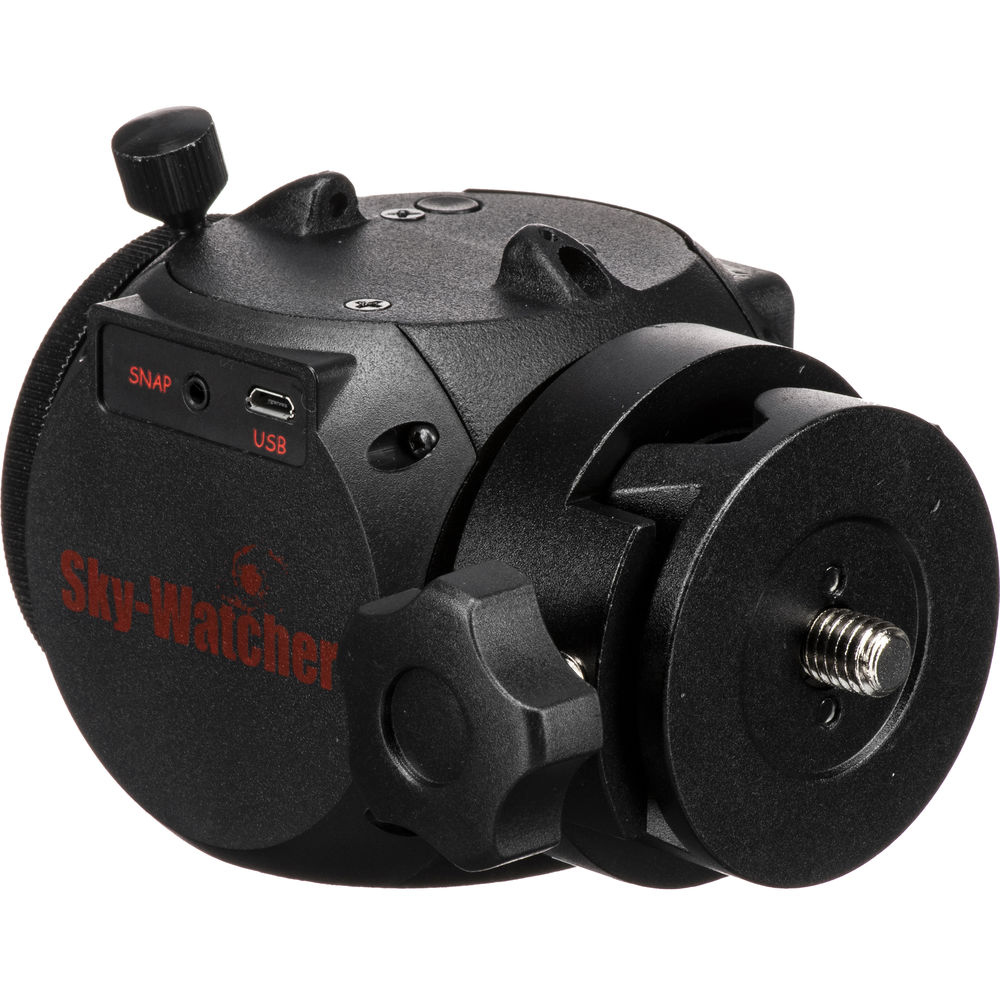

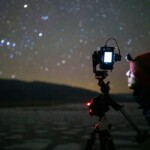
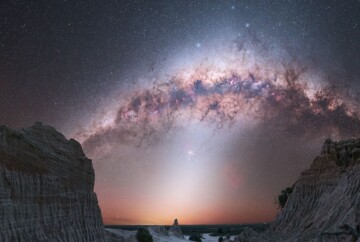
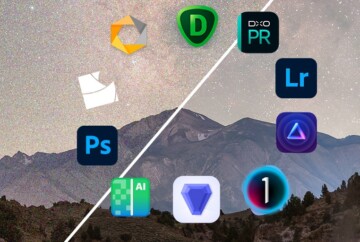







hi Dan,
currently going through your ultimate course and super excited. I am going to buy a star tracker soon and hence, coming out for advice. do you still recommend the iOptron or you want me to wait few more months for Benro Polaris for an update ?
between iOptron and star adventurer, what is your recommendation as of today ?
Regards,
Omkar
Omkar,
As of now, I’d recommend the Benro Polaris over the iOptron for general wide-field Astro. I love the Benro Polaris so much that I just created a new Benro Polaris Course about this tracker.
Best,
Dan
Outstanding article!!! Very informative.
Of course, this article is about star trackers. But I’m wondering if you are familiar with the Sky-Watcher SolarQuest? I understand that the SolarQuest is only designed and intended to track the Sun. I am an amateur landscape photographer, and I have never done any astrophotography. But I am planning to take trips to view the annular solar eclipse in 2023, and the total solar eclipse in 2024. I am thinking that the SolarQuest would be ideal for someone like me to use in order to make photographing the eclipses as uncomplicated as possible. One thing that isn’t yet clear to me concerning the SolarQuest is whether or not a DSLR camera can be mounted to it. The descriptions that I’ve seen seem to indicate that the SolarQuest is only intended to be used with solar telescopes and not with other types of optical devices. But is seems like Sky-Watcher would be missing out on a big chunk of the market if this is the case, and the SolarQuest cannot be used by people who do not own or do not want to invest in a telescope and only want to use a DSLR camera.
Jim, I don’t do solar tracking and I’m not familiar with the Skywatcher SolarQuest, but thanks for sharing this information!
Out of all of these, if compact is not an issue, then the Fornax Light Track 2 is by far the best tracker. The fact that it requires an external battery is not an issue, it makes it easier to charge and a small power pack can be used which is great if you need several nights of power. As for needing to rewind it, yes you do, but this is seldom an issue as most exposures are still only a matter of minutes. If you want to do several hours of integration time then none of these trackers are the best option. The Light Track 2 will do a 15 minute exposure with a wide field lens, this captures an enormous amount of detail and depth to an image. None of the other trackers reviewed will come close to this.
It’s a great tracker, indeed! The main reason why I could never justify taking the Fornax is its size, as it’s too bulky and cumbersome to pack for long travels and hikes.
Very interesting article!
Which ones would you recommend to ALSO use them to track stars for Astro observation (when not doing Astro photo)?
I use a Televue 85 with various eyepieces for Astro observation (600mm f/7, 6 ponds + 2 pounds eyepiece).
Number 6 seems the best solution because of its GoTo capability, but the Benro also seems very interesting.
There is the same potential for those who use birding lenses (photo and observation) and want to use it for star observation and photography. Having two or three usages for the higher tier of star trackers helps justify their price.
Thanks a lot !
Yvan
Yvan,
Thanks for your nice words! It’s difficult to tell since I only use them for photography purposes. Regardless of that, I think that any of them can also work for that goal 😉
After studying the specs an reviews an comparisons made bij others, and comparing online and asking around personal I just bought the Omegon Minitrack LX 4 (also LX Quattro). It works mechanic so no batteries. Can hold 5kg so enough for my Sony A6300 plus lens. Cost €189.- . The I added the omegon OM10 ballhead for €59,-
I seen very good results of succesfull and active astrophotografers. They mailly use it when they want to travel light I understood. But for me as a cpmplete beginner seems perfect and lowcost. Can even carry a lightweght telescope.
Not a bad option Wil! 😉
Any tracker recommendations regarding the Sony A7R4 with the Sony 200-600mm lens (approximately 6.5 to 7 lbs. total weight)?
Thank you!!!
Lonnie,
I’d go for the iOptron Skyguider Pro or the new SKywatcher GTI if you plan ti focus on deep-sky 😉
Thanks for sharing informative article, I really like this post.
Thanks, Arun!
Hello! Great article!
I don’t get one thing about maximum exposure times: are they given for a certain focal length or for the maximum focal length? For example iOptron SkyGuider has exposure time of 5-6 minutes and maximum focal length around 400 mm. Does it mean that one will be able to make 5-6 minute exposures at 400 mm, or at 400 mm the exposures will be shorter like around 1 minute for example? The same for MSM Rotator – 1-2 minutes and up to 50 mm..
So my real question is whether I would be able to get longer exposures with the iOptron SkyGuider Pro than with MSM Rotator, if using one and the same wide focal length (14 mm for example)? I guess in that case with iOptron SkyGuider Pro and 14 mm lens I could go to very low ISOs down to ISO 100 and at the same time quite closed aperture to around f11, while with the MSM Rotator I would have to sacrifice a little on the sharpness side by using a wider aperture on the lens or a higher ISO?
Kris,
Max. exposure times are just a reference to the limitations of the tracker. This limit also depends on the focal length. Taking the iOptron Skyguider Pro, your max. exposure time at 14 mm can be 7 minutes, whereas using a 600 mm it might be a few seconds.
If you take two different types of trackers like the IOptron Skyguider and the MSM with the same camera and same focal length (e.g. 135 mm), all factors the same you’ll be able to take longer exposures with the iOptron, allowing you to use better settings like a lower ISO or a narrower aperture.
Hope this makes sense!
Dan
Is it worth buying a star tracker in the southern hemisphere? Polaris isn’t visible and it seems extremely complicated trying to align them.
Thanks
Hi Ethan,
Of course it’s worth it! It’s true that it’s more difficult to locate the South Celestial Pole, but you can do it with some practice and the quality in your images will be much better.
There’s a new star tracker now called Benro Polaris which does the Polar alignment automatically using GPS. I’ve tested it out and it looks awesome. I’ll include it in the article soon 😉
Best,
Dan
BRESSER Photo Mount with
Field Tripod and Wedge ..
*Payload Capacity : 2.5k
-How is this star tracker? Any review on this please.
Aveek,
I’ve never tried that star-tracker so I can’t tell!
Best,
Dan
Great article. Wish I’d had something like this to help me when I chose my Star tracker. I had a friend with an iOptron and one with a Star Adventurer. I went with the Star Adventurer due to the better photos taken between my friends. I am considering an upgrade to my SA, though. Many people are going with the William Optics equatorial base on their Star Adventurer or iOptron trackers and have stated it made a huge difference. Clear skies!
Thanks, Cheryl!
I’d wait and see how the new Benro Polaris work. I tested it out with one of our students on my last Utah astroworkshop and I was really impressed seeing everything was automated and very accurate.
The William Optics EQ Base is very high-quality but heavy, I personally use the Skywatcher base with the iOptron Skyguider Pro and it works perfect!
Happy captures & Clear skies!
Dan